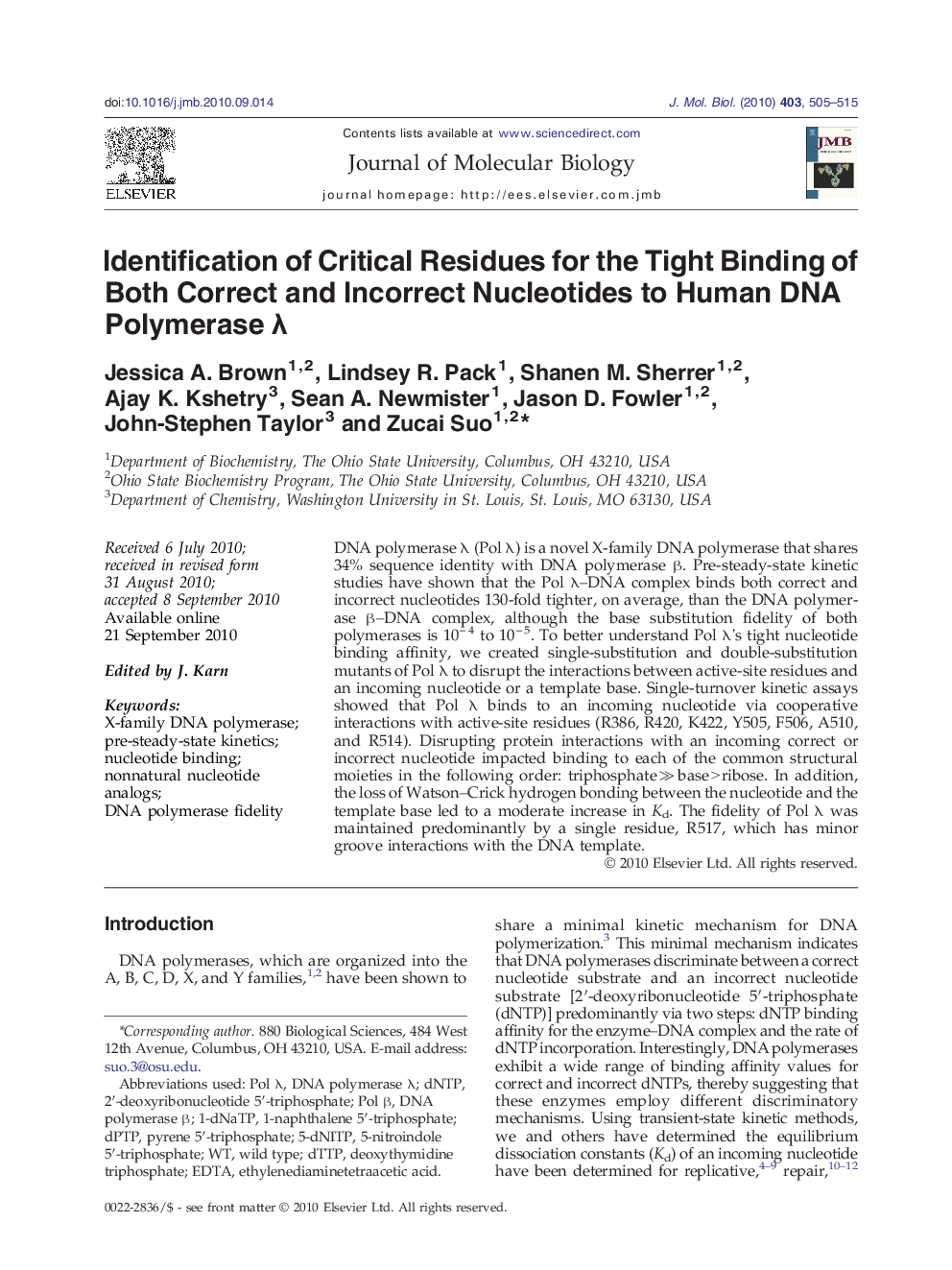| Article ID | Journal | Published Year | Pages | File Type |
|---|---|---|---|---|
| 2185382 | Journal of Molecular Biology | 2010 | 11 Pages |
DNA polymerase λ (Pol λ) is a novel X-family DNA polymerase that shares 34% sequence identity with DNA polymerase β. Pre-steady-state kinetic studies have shown that the Pol λ–DNA complex binds both correct and incorrect nucleotides 130-fold tighter, on average, than the DNA polymerase β–DNA complex, although the base substitution fidelity of both polymerases is 10− 4 to 10− 5. To better understand Pol λ's tight nucleotide binding affinity, we created single-substitution and double-substitution mutants of Pol λ to disrupt the interactions between active-site residues and an incoming nucleotide or a template base. Single-turnover kinetic assays showed that Pol λ binds to an incoming nucleotide via cooperative interactions with active-site residues (R386, R420, K422, Y505, F506, A510, and R514). Disrupting protein interactions with an incoming correct or incorrect nucleotide impacted binding to each of the common structural moieties in the following order: triphosphate ≫ base > ribose. In addition, the loss of Watson–Crick hydrogen bonding between the nucleotide and the template base led to a moderate increase in Kd. The fidelity of Pol λ was maintained predominantly by a single residue, R517, which has minor groove interactions with the DNA template.
Graphical AbstractFigure optionsDownload full-size imageDownload high-quality image (101 K)Download as PowerPoint slideResearch Highlights► Interactions between Pol λ and triphosphate moiety greatly impact 2′-deoxyribonucleotide 5′-triphosphate binding. ► Watson–Crick hydrogen bonding of nascent base pair has a mild effect on 2′-deoxyribonucleotide 5′-triphosphate binding. ► R517 governs the fidelity of Pol λ.
